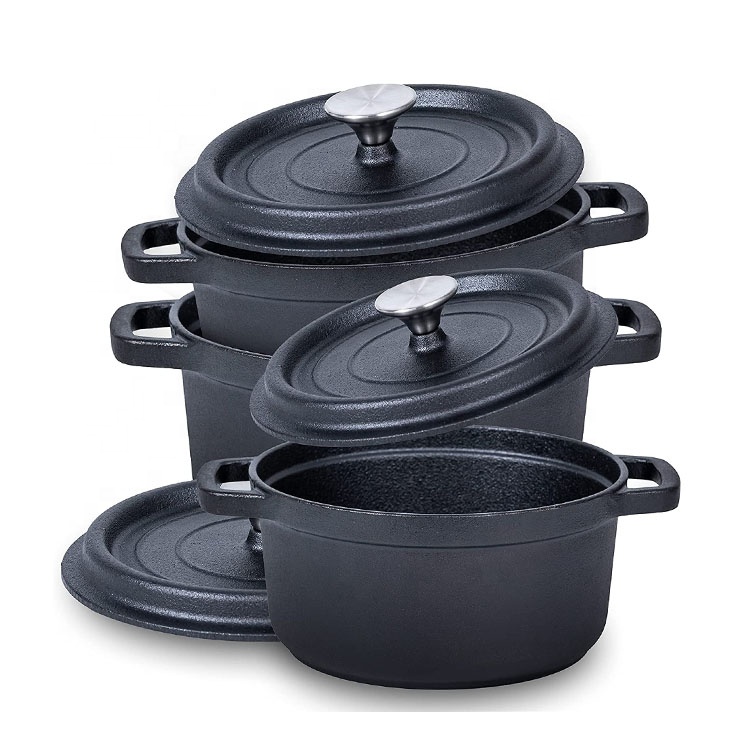
Caring for Your Cast Iron Dutch Oven for Lasting Culinary Use
The Versatility of Cast Iron Dutch Oven Pans
The cast iron Dutch oven pan is a quintessential kitchen accessory prized for its durability and versatility. Originally designed for slow cooking, this heavy-duty cookware has evolved into a culinary staple among home cooks and professional chefs alike. Whether you're cooking a hearty stew, baking bread, or frying chicken, the cast iron Dutch oven can handle it all.
Historical Significance
The history of the Dutch oven dates back to the 18th century. It was initially created in the Netherlands, where a sand casting technique was used to produce the first versions of this versatile appliance. The design was later improved in England, which is where the name “Dutch oven” originated. Early settlers brought the Dutch oven to America, and it quickly became a favorite due to its ability to cook food evenly and retain heat for long periods, making it ideal for cooking over open flames.
Material Benefits
The primary material used in Dutch ovens is cast iron, which boasts exceptional heat retention and distribution properties. This ensures that food cooks evenly without hot spots. Additionally, cast iron pans can withstand high temperatures, making them exceptionally versatile for various cooking methods. From searing meat to slow-roasting vegetables, the cast iron Dutch oven can do it all.
Cast iron is also naturally non-stick when properly seasoned. A well-maintained Dutch oven will develop a glossy, rust-resistant surface that enhances the flavor of food over time. Unlike modern non-stick pans, which can wear out and become less effective, a cast iron Dutch oven can last for generations when cared for properly. This longevity makes it an eco-friendly choice for cooking.
cast iron dutch oven pan

Cooking Techniques
One of the most popular methods to use a cast iron Dutch oven is braising. This technique involves browning food on the stovetop and then adding liquid before covering and cooking it slowly in the oven. The cast iron material helps to intensify flavors and tenderize tougher cuts of meat. For example, a beef stew cooked in a Dutch oven benefits from the gradual heat and moisture retention, resulting in succulent, flavorful meat and aromatic vegetables.
Another excellent use for the Dutch oven is baking. Many people don’t realize that this heavy pot can be used for baking bread. When preheated, the Dutch oven creates a mini-oven effect, trapping steam and allowing bread to rise beautifully, providing a crispy crust that is hard to replicate in a standard oven. Artisan-style loaves and rustic sourdough can easily be made at home, impressing friends and family alike.
Maintenance and Care
Caring for a cast iron Dutch oven is straightforward but requires some attention. Always hand wash it with warm water, avoiding soap that can strip the seasoning. After washing, it’s essential to dry it thoroughly and apply a thin layer of cooking oil to maintain the non-stick surface. Occasionally, you might need to re-season the cookware to keep it in optimal condition. This process restores its natural non-stick properties and prevents rusting.
Conclusion
With its rich history, remarkable durability, and versatile cooking capabilities, the cast iron Dutch oven pan is an indispensable tool in any kitchen. Its ability to transition from stovetop to oven makes it perfect for a wide variety of dishes, from savory stews to freshly baked bread. While maintaining a cast iron Dutch oven may require a little effort, the rewards—both in flavor and in longevity—are well worth it. Investing in a good-quality cast iron Dutch oven can elevate your cooking game and provide you with delicious meals for years to come. As culinary trends come and go, this classic cookware remains a timeless choice, proving that the art of cooking can appreciate in both skill and flavor with the right tools.
-
Season Cast Iron Perfectly with GPT-4 Turbo TipsNewsAug.01,2025
-
High Quality Cast Iron Cookware - Baixiang County Zhongda MachineryNewsAug.01,2025
-
Premium Cast Iron Pan: Durable & Perfect HeatNewsAug.01,2025
-
High Quality Kitchen Durable Black Round Cast Iron Cookware Pancake Crepe Pan-Baixiang County Zhongda Machinery Manufacturing Co., Ltd.NewsAug.01,2025
-
Cast Iron Cookware - Baixiang County Zhongda Machinery | Nonstick, Heat ResistanceNewsAug.01,2025
-
High Quality Kitchen Durable Black Round Cast Iron Cookware - Baixiang County Zhongda Machinery | Non-Stick, Heat Retention, DurableNewsJul.31,2025


